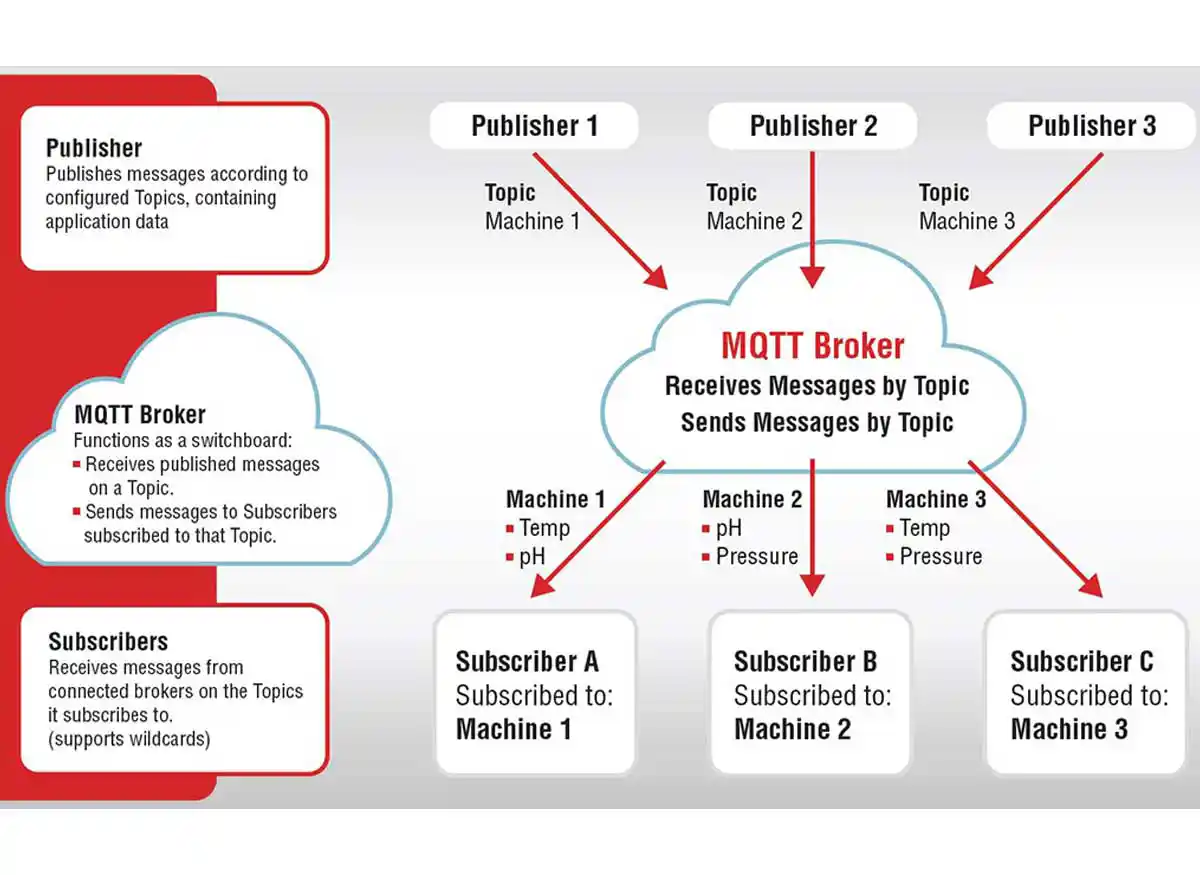MQTT
Message Queuing Telemetry Transport
MQTT is a the leading TCP/IP machine-to-machine/IoT communication protocol for Industry 4.0 that provides data exchange within a network of devices. It is a lightweight, open source publish/subscribe communication model with a fast response time. Getting up and running with MQTT is quick and easy. It is a good choice for small-sized devices with low power consumption. Its minimum overhead ensures smooth data transfer with low bandwidth.
Publish/subscribe communication method
Thanks to the lightweight Publish/subscribe method MQTT is interesting for use in mobile applications, where energy-efficient and reliable data transfer is key. Publish/subscribe is an alternative to the traditional HTTP client-server model, where the client communicates directly with the endpoint.
The difference is that in the publish/subscribe model, the client does not extract data from the server, but he receives the messages relevant to the topic he’s subscribed to from the server. A reliable TCP connection is required for communication. If this is interrupted, the server can store the data in a data buffer and send it to clients when the connection is re-established.
Event driven data transfer
The central communication point is the so-called MQTT broker, which communicates with the clients (publishers and subscribers) via an internet connection or a local network. A publisher creates messages and publishes them to a certain topic.
The data transfer is event-driven, which means that data is transmitted when change occurs (or at time intervals). A subscriber receives the messages relevant to the topic it is subscribed to.
As a standard practice, topics should follow a hierarchy which allows for logical grouping/arrangement for a network of sensors.
Read the latest Networking news
Axiomtek ROBOX300 Robotics Controller for AMR Optimization
Use the compact and energy-efficient ROS 2 robotics controller, ROBOX300, designed specifically for AMRs in demanding industrial environments.
Secomea Product Releases 2024
Explore Secomea's Product Releases to discover the key developments and new features introduced in 2024, and stay up-to-date!
octoplant Data Management Solution from AUVESY-MDT
Modular software platform octoplant from AUVESY-MDT ensures data consistency and greater protection for your plant.
Secomea’s quest to cybersecurity superiority
A compliance of Secomea remote access solution with the NIS2 directive helps you establish a strong defence against cyberthreats.
Ultra-compact edge AI system AIE100A-ONX Axiomtek
Use the edge AI system with 5x greater performance for speeding up the implementation of deep learning capabilities into your IoT devices.
Fanless embedded system Axiomtek eBox710A
Durable eBox710A is perfect for AIoT applications that require robustness, flexibility and performance even in harsh industrial environments.
Subscribe to our newsletter!














